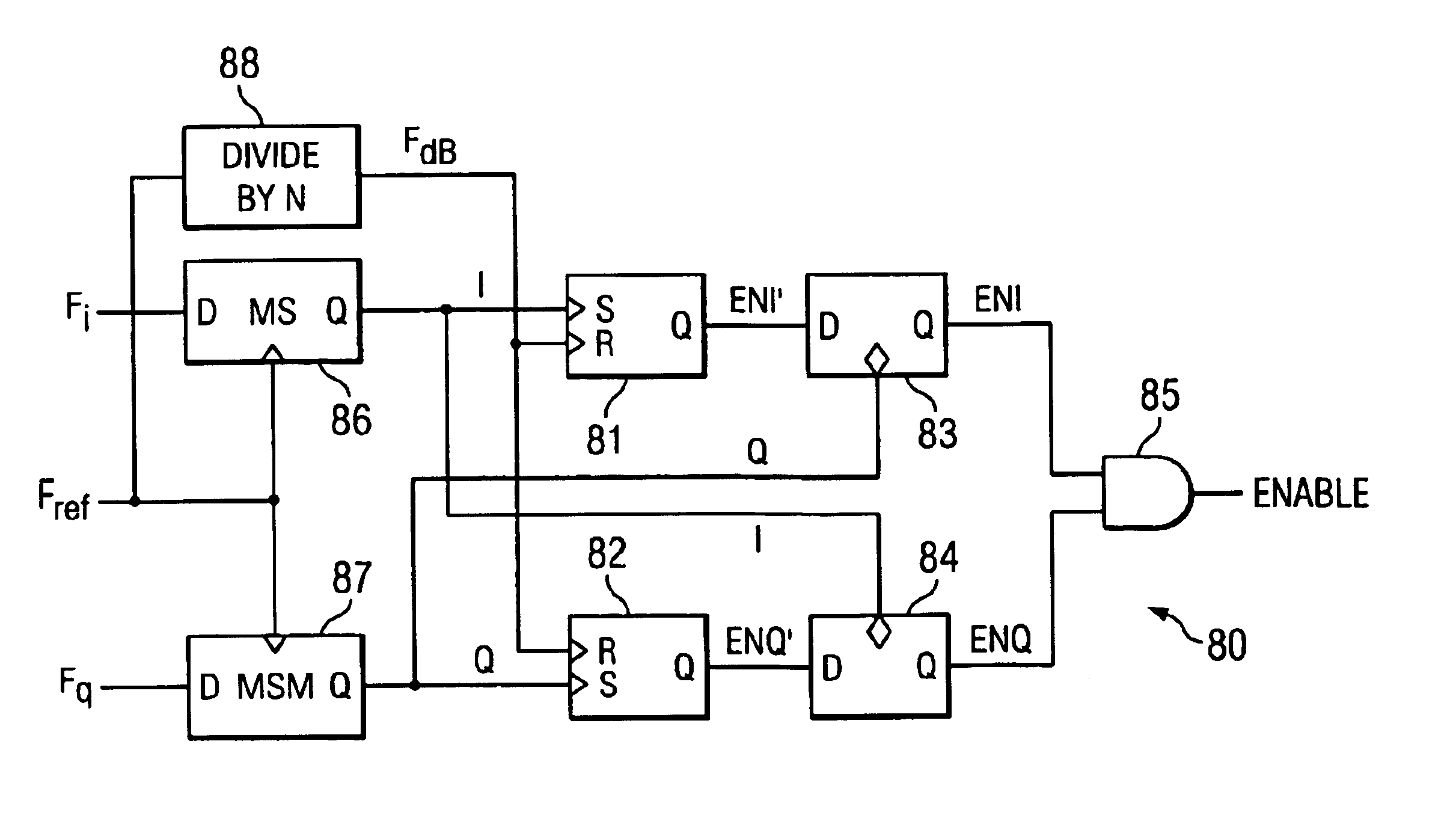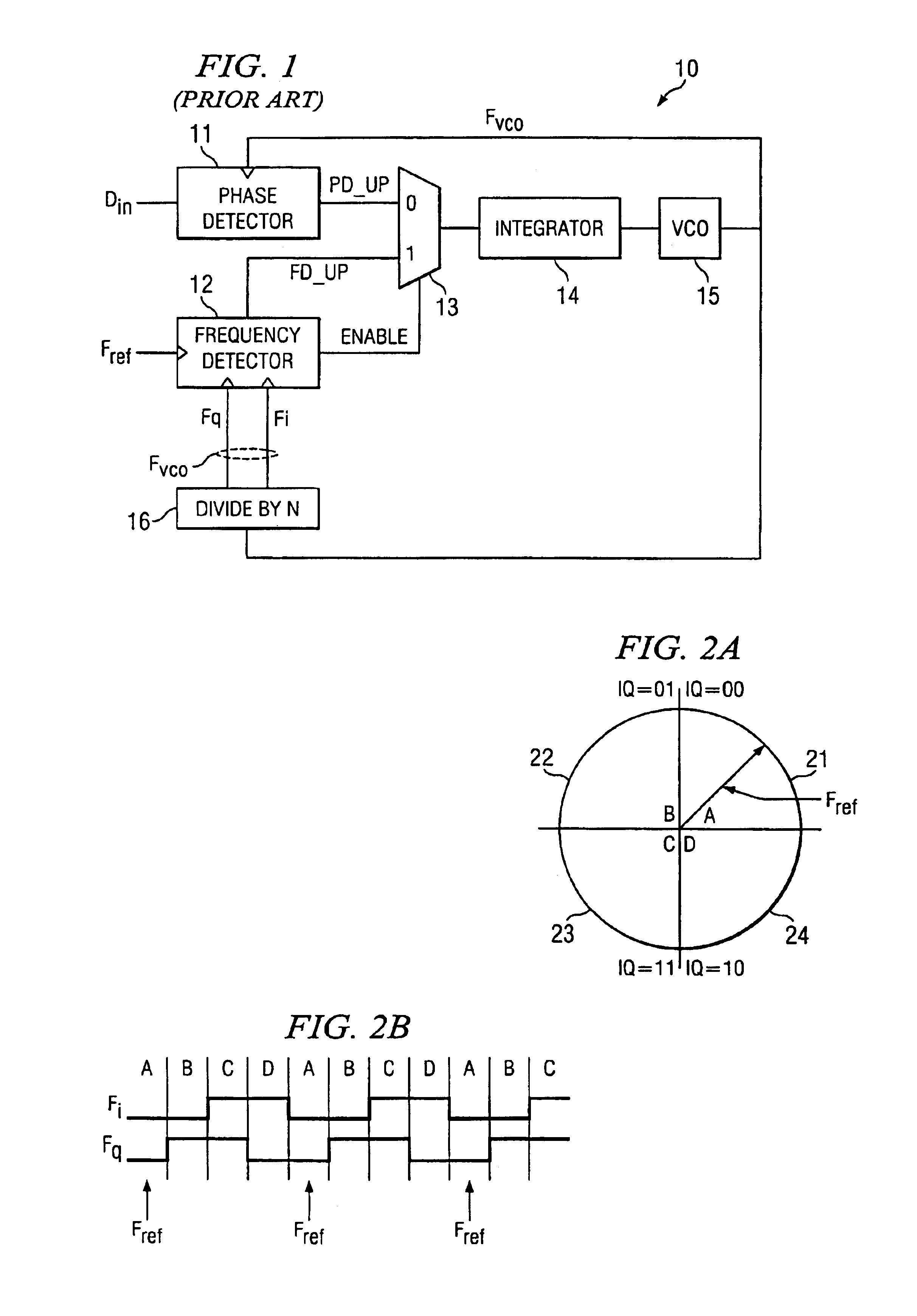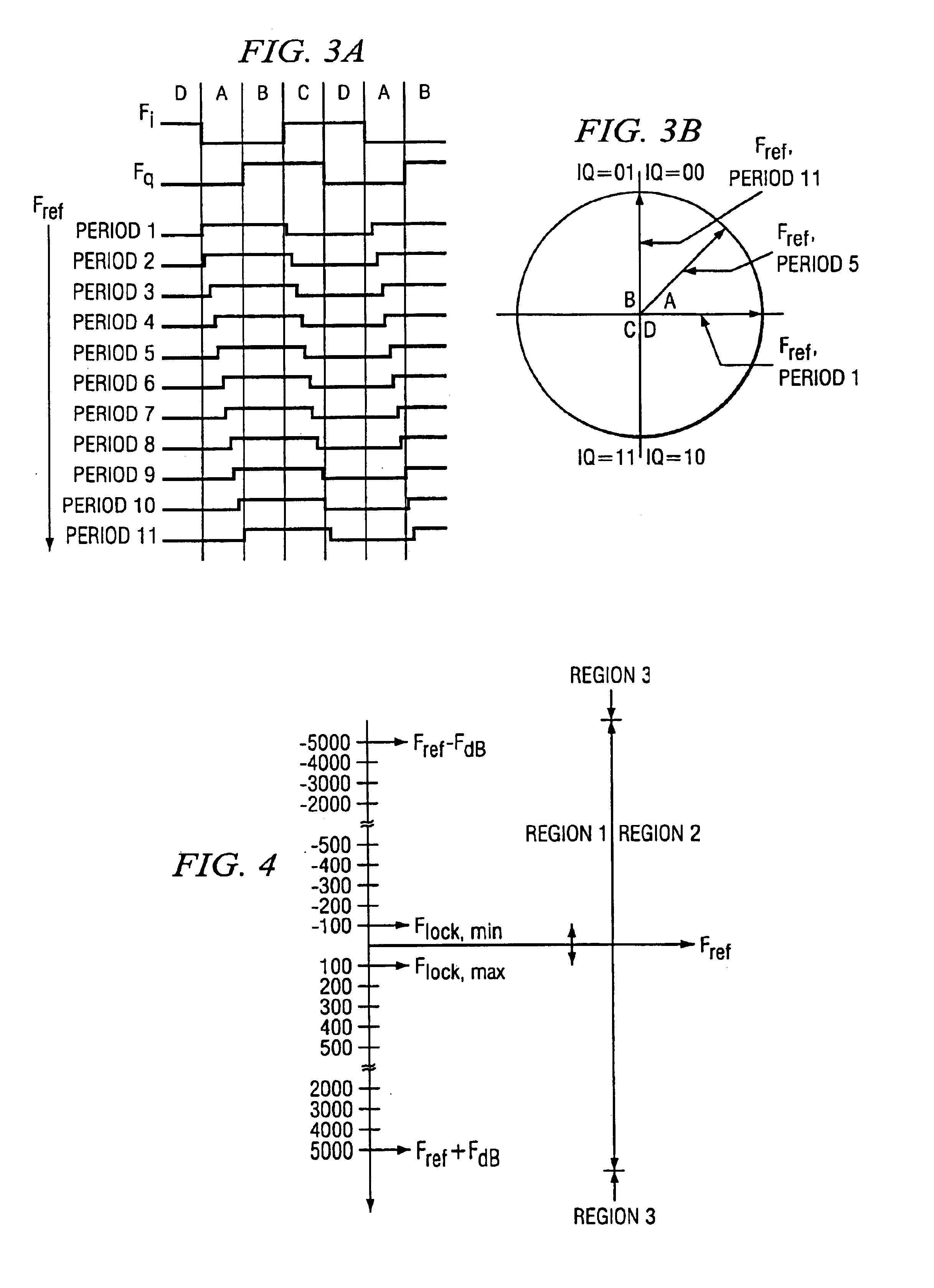System and method for dead-band determination for rotational frequency detectors
a detector and rotational frequency technology, applied in pulse automatic control, pulse technique, instruments, etc., can solve the problems of circuit drifting out of phase lock, circuit losing lock, and pll temporarily losing lock
- Summary
- Abstract
- Description
- Claims
- Application Information
AI Technical Summary
Benefits of technology
Problems solved by technology
Method used
Image
Examples
Embodiment Construction
[0025]A digital implementation of rotational frequency detector 10 works by sampling two versions of an input clock, which are 90° out of phase (Fi and Fq), with a reference clock Fref. These signals can be thought of forming four quadrants labeled A, B, C, and D as shown in FIG. 2A. When the input frequency Fvco is identical to the reference frequency Fref, the phase of the reference clock is static with respect to the input frequency. The reference vector is also static and does not change quadrants. When the frequencies are different, the phase of the reference clock changes with respect to the input frequency and the reference vector can be thought of as rotating with respect to the input. The sign of the frequency difference can be found by the direction of rotation: either A,B,C,D, . . . or D,C,B,A, . . . . The magnitude of the frequency difference also has to be found and compared to the dead-band frequency.
[0026]As discussed above, circuit 10 is either under control of phase...
PUM
 Login to View More
Login to View More Abstract
Description
Claims
Application Information
 Login to View More
Login to View More - R&D
- Intellectual Property
- Life Sciences
- Materials
- Tech Scout
- Unparalleled Data Quality
- Higher Quality Content
- 60% Fewer Hallucinations
Browse by: Latest US Patents, China's latest patents, Technical Efficacy Thesaurus, Application Domain, Technology Topic, Popular Technical Reports.
© 2025 PatSnap. All rights reserved.Legal|Privacy policy|Modern Slavery Act Transparency Statement|Sitemap|About US| Contact US: help@patsnap.com



